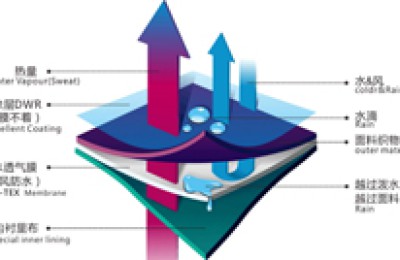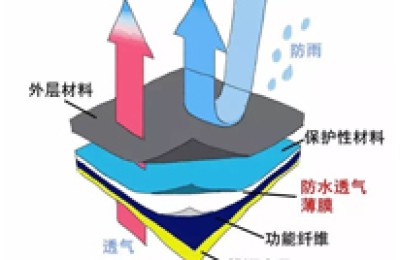After repeated oscillations, Brent crude oil “soared into the sky” last Thursday, strongly breaking through the resistance mark of US$50/barrel. The strength of the bulls changed from the previous hesitation, and the intraday high reached US$51/barrel. On the barrel, it seemed as if all the worries about the epidemic were blown away by the wind overnight, and the bulls who had been suppressed for too long finally found a good opportunity to “vent.”
The reason why I say “vent” is because the problems faced by the current market are far more than just the epidemic. The rising EIA data shows that U.S. crude oil inventories have increased significantly by 15 million barrels. Inventories increased significantly by 25 million barrels. The bulls withstood the pressure and resolved the selling pressure of the shorts. This gave them the basis to break through 50 US dollars per barrel. The bulls were able to make a strong breakthrough at this time despite the repeated record highs of the global epidemic and the sharp weakening of EIA data, which shows their determination to push up oil prices. However, as of last Friday’s close, Brent crude oil still fell back below $50 per barrel, because the market is still facing uncertainty.
In terms of epidemic data, as of December 11, the number of new confirmed cases of the global epidemic in a single day reached 640,000 per day, and the cumulative number of confirmed cases reached 69 million; the epidemic is the most serious The Americas added 320,000 people/day, of which the United States added 220,000 people/day; Europe added 200,000 people/day. Not only have we not seen an improvement in the epidemic, but the epidemic is heading for a worse path. Therefore, the reason why short-term crude oil prices can be so strong is that it is supported by the expectation of a vaccine.
However, the vaccine does not seem to be a powerful “weapon” that bulls can rely on for a long time. Although various countries have launched vaccines, production capacity seems to have become another problem. AstraZeneca has delayed the supply of large quantities of the new crown vaccine due to production delays. According to foreign media reports, the British government’s vaccine working group admitted last Monday that the vaccine jointly developed by Oxford University and AstraZeneca can only supply 4 million doses this year. Earlier this year, the working group expected that the UK would be able to produce 30 million doses of vaccine by the end of the year. This is the second COVID-19 vaccine to be affected by production delays. Previously, Pfizer informed U.S. officials that it would not be able to provide large amounts of additional vaccines before the end of June or July next year. Therefore, there is still no definite time when the global epidemic can be brought under control.
In order to quickly promote vaccines, Western countries have omitted some necessary testing links. Among them, the Pfizer vaccine has encountered major problems. Recently, four Phase 3 volunteers who received the Pfizer vaccine developed Bell’s palsy, or facial paralysis. The British National Health Service confirmed that two staff members of the institution suffered severe allergic reactions after receiving the Pfizer vaccine on the 8th. In addition to these common adverse reactions, six people died during the Pfizer vaccine trial, two of whom died after receiving the vaccine.
Despite this, Western countries have accepted these adverse reactions by default in order to quickly stabilize their economies and control the epidemic. The United Kingdom, Bahrain and Canada have already approved the use of the Pfizer vaccine. The United States will soon approve the use of the vaccine. Brazil will start vaccinations from January to February next year. The fact that more and more countries are beginning to vaccinate is the most important basis for the strength of crude oil prices, and it is also a key factor for bulls to push up oil prices.
U.S. inventories increased sharply, and bulls “turned a blind eye”
The biggest news in the inventory market last week was The U.S. inventory data is extremely different. In the week ending December 4, U.S. crude oil inventories increased significantly by more than 15 million barrels. Among them, Gulf Coast crude oil inventories increased by 11.8 million barrels, the most on record. Not only did crude oil inventories increase significantly, Gasoline and refined oil inventories also increased significantly. Gasoline inventories increased significantly by 4.22 million barrels, refined oil inventories increased significantly by 5.22 million barrels, and full-bore inventories increased by nearly 25 million barrels. At the same time, U.S. net crude oil imports increased by 2.7 million barrels last week, the largest increase in history. Affected by this, oil prices fell sharply, falling by nearly $1/barrel during the session. However, the market’s optimism later stopped the downward price trend, and oil prices began to stabilize and recover.
When there is huge negative news in the market but the price does not fall and the market chooses to turn a blind eye, it often occurs in the process of a super bull market. The market is pushed up by strong bullish sentiment and any price rises. The negative factors will be ignored, and the smaller positive factors will be infinitely magnified and speculated in turn until the price is pushed to a new height. But is the current crude oil price a bull market? It is difficult for us to agree that the only feasible explanation is that optimism about the vaccine at the macro level offsets the negative impact of crude oil market fundamentals.
From an inventory perspective, crude oil inventories are usually in the stage of slight depletion in December. However, due to the special situation this year and the large accumulation of last week’s data, it is expected that In the short term, U.S. crude oil inventory data does not provide a large bullish effect. Refined oil inventories are usually in the accumulation stage at the end of the year, as are gasoline and diesel inventories. Therefore, U.S. full-bore inventories are expected to remain relatively bearish in the face of a severe epidemic.
As of the week of December 4, U.S. refinery operating rates and refining inputs rebounded slightly. Although there is still a large gap from the same period in history, at least it does not provide negative factors. . The number of U.S. rigs has stabilized recentlyU.S. crude oil production is also gradually recovering. As crude oil prices continue to rise, shale oil producers have been able to make stable profits. The number of drilling rigs will continue to rise in the future, and U.S. crude oil production will also continue to rise. will maintain a slight increasing trend.
Uncertainty on the supply side
OPEC+ has reached a plan to gradually increase production. It will increase production by approximately 500,000 barrels per day in January next year. The production in February next year will depend on the fundamental situation in December this year. As prices rebound, the binding nature of the production reduction agreement seems to be decreasing. Faced with the temptation of high oil prices, more and more oil-producing countries have begun to relax control over production. Therefore, the effectiveness of the production reduction implementation in January next year will become key. , once some countries relax control over production, the price of crude oil may not continue to rise without the support of increased demand.
Another thing to note are the variables of Iran and Venezuela. Venezuela has previously stated that it will resume crude oil exports to China, and China has sent several oil tankers to Venezuela. Iran is preparing to send ten oil tankers to Venezuela, carrying refined oil products that Venezuela urgently needs on the outbound trip, and transporting crude oil on the return trip to facilitate Venezuela’s exports. Therefore, it is foreseeable that Venezuela’s crude oil production may gradually recover in the next few months.
The same is true for Iran, which plans to gradually start exporting crude oil in January next year. Crude oil production in Iran and Venezuela has plummeted under sanctions imposed by the Trump administration. After Biden takes office, sanctions on these two countries may be relaxed, so crude oil exports will become possible.
From the perspective of historical production, Iran’s crude oil production has a reasonable scale of about 4 million barrels/day, and its export volume is between 2 million and 2.5 million barrels/day. Iran’s current production is not At 2 million barrels per day, export volume is almost zero, so once sanctions on Iran are lifted, there will be 2 million to 3 million barrels per day more production capacity on the market. The reasonable scale of Venezuelan crude oil production is 2.5 million to 3 million barrels per day, and the export volume is 1.5 million to 2 million barrels per day. Currently, Venezuela’s production is almost zero, and the export volume is only 500,000 barrels per day. This also means that Venezuela will have an increase in production capacity of approximately 2.5 million barrels per day and an increase in exports of approximately 1 million to 1.5 million barrels per day. Therefore, once sanctions are lifted, the market will increase production by approximately 4.5 million barrels per day in a short period of time, and exports will also increase by 2.5 million to 3 million barrels per day, or wipe out all the efforts of OPEC+.
From the inventory side, the market’s hidden supply is constantly being consumed. The global crude oil floating tank inventory has dropped to a reasonable range, and the floating tank inventory in Asia has also fallen sharply. , after the release of offshore inventories is completed, it will help relieve the huge pressure on the supply side. However, we cannot be completely blindly optimistic. Until the demand side really improves, crude oil prices will always face huge uncertainty when it rises.
The current crude oil market is a confrontation between weak fundamentals and strong macroeconomics. The recent macroeconomic sentiment driven by vaccines have the upper hand, but we have also been emphasizing that expectations are expectations after all. How far expectations can go is still a question. Whether it can support the true popularization of vaccines is also a question. If it cannot support the full spread of vaccines, then crude oil prices must find The new hype point seems to be difficult at present based on the progress of vaccine popularization, so we still recommend investors to be cautious in the near future. </p







